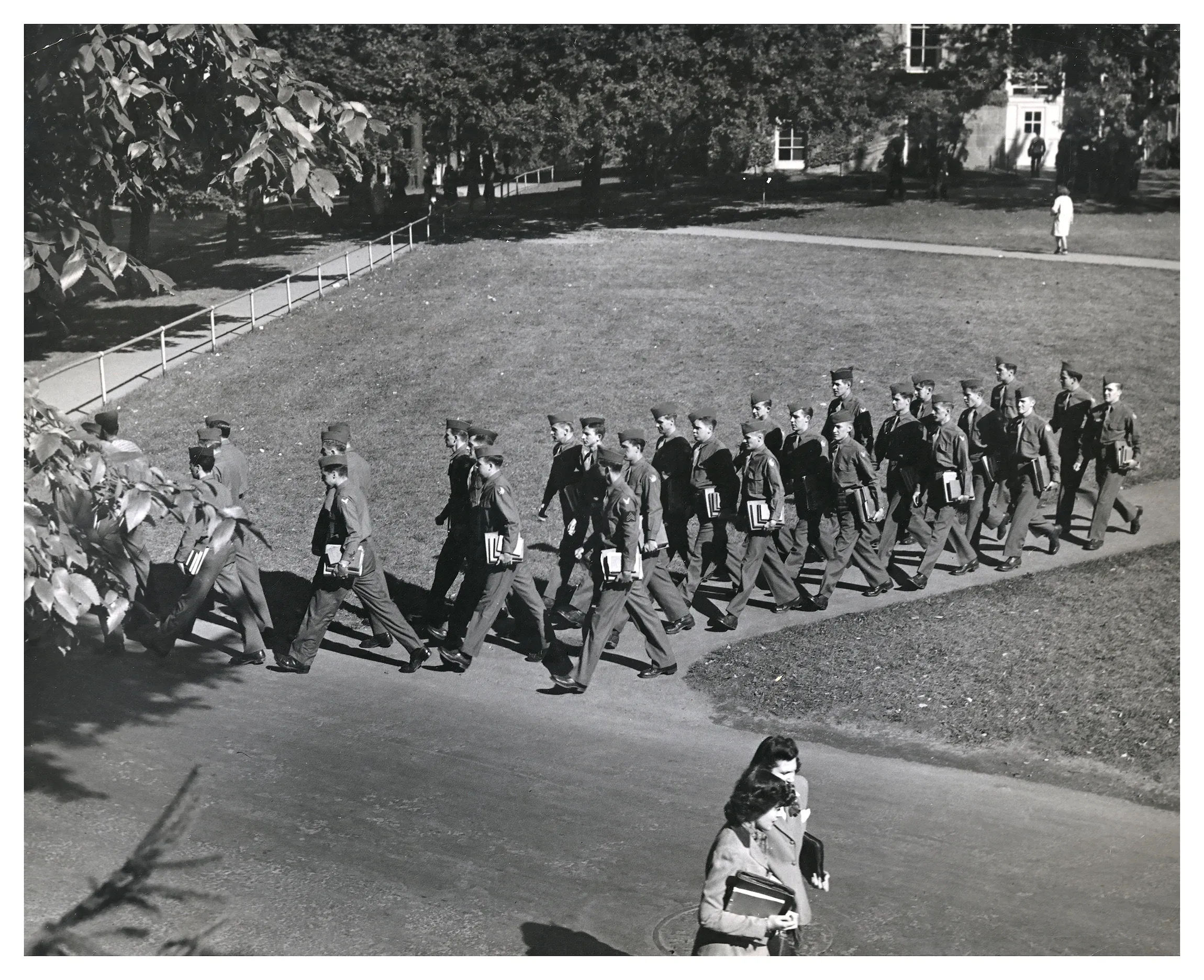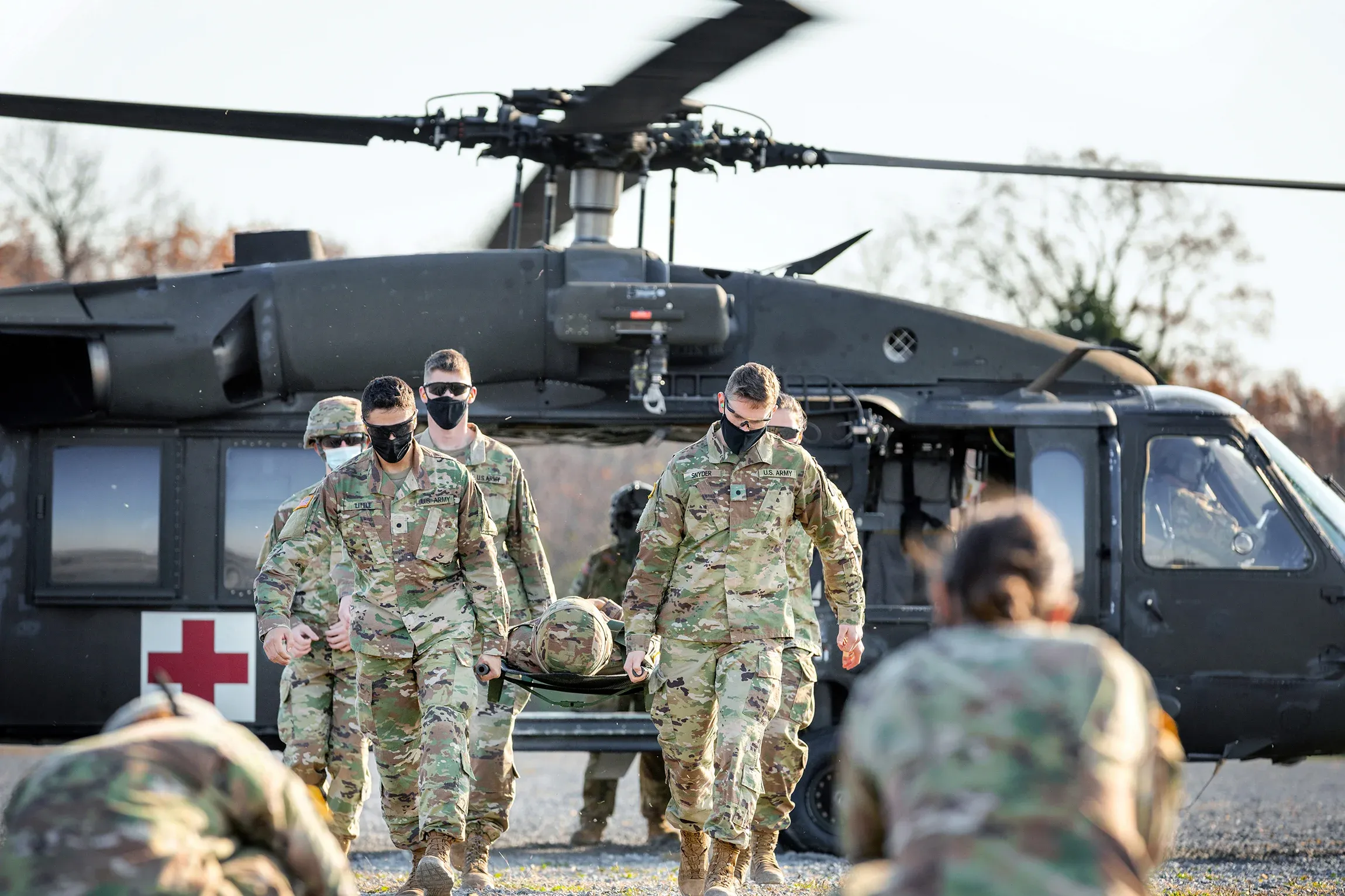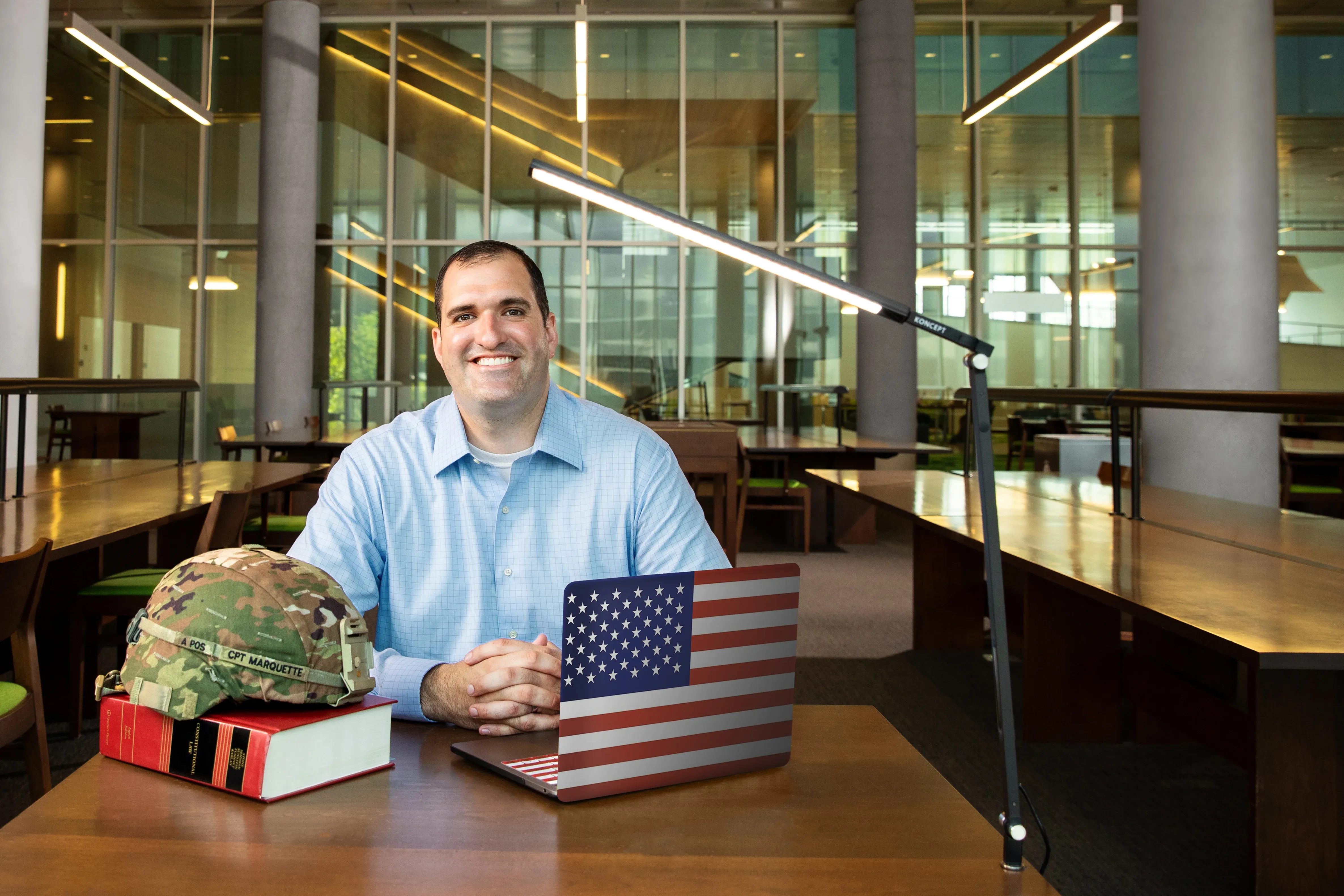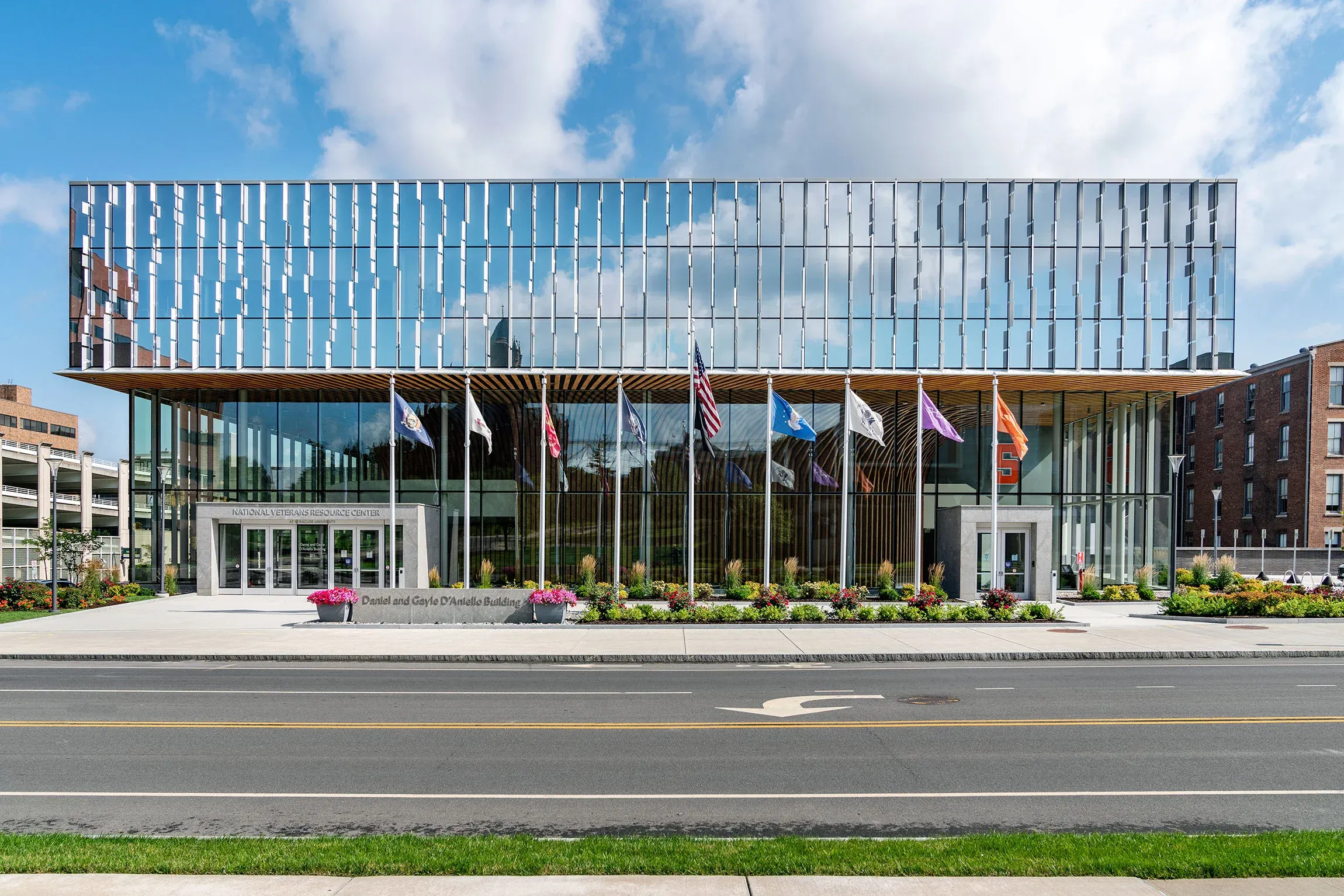-

Serving Those Who Have Served
One of the most important developments at Syracuse University came in the second half of its history: an expanded commitment to veterans. It followed the creation of the Servicemen’s Readjustment Act of 1944—better known as the GI Bill. The initial pledge dates further back, though, to World War I, and the University remains committed to veterans today. The creation of the original GI Bill and the Post-9/11 GI Bill continues to impact veterans and their families to this day. Learn how the history of this support unfolded. -

The Original GI Bill
In 1946, the University welcomed more than 9,000 World War II veterans with the help of the GI Bill, which covered tuition and expenses for returning veterans—and was authored in part by Syracuse University Chancellor William Pearson Tolley. By 1947 half of the student body were veterans.
Photo courtesy of Syracuse University Archives.

The Post-9/11 GI Bill
The Post-9/11 GI Bill was created after the attacks on Sept. 11, 2001, and subsequent wars in Iraq and Afghanistan. Developed for service members since 9/11, it provides the same educational opportunities as for those who served during World War II.

Post-Service Education
Ryan Marquette L’22 says it’s because of the Post-9/11 GI Bill that he was able to pursue his studies. “Thanks to the GI Bill, I was able to not only pursue a law degree, but also a master's in public administration, and I became a member of Syracuse Law Review,” he says.

Yellow Ribbon Program
More than 80,000 service members nationwide applied for the Post-9/11 GI Bill when the bill was first enacted. Syracuse University has been a member of the Yellow Ribbon Program—which covers expenses beyond what is covered by the bill—since the program's inception.

Impact on the Next Generation
Brynn Taylor ’25 is studying forensic science using the Post-9/11 education benefit transferred from her father, Scott, who served more than two decades in the Army. “I feel really fortunate that he served and that I’m able to go to a good school,” Taylor says.
